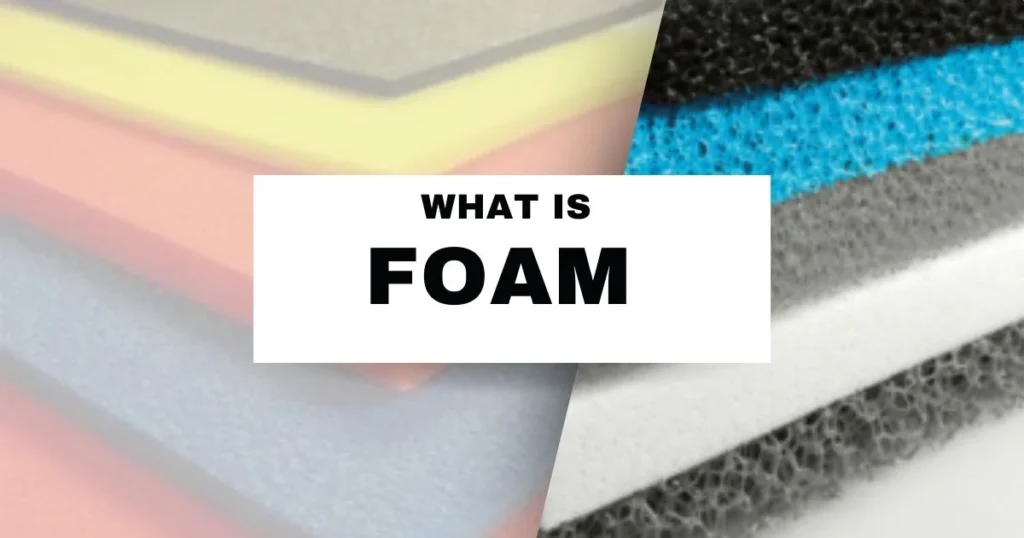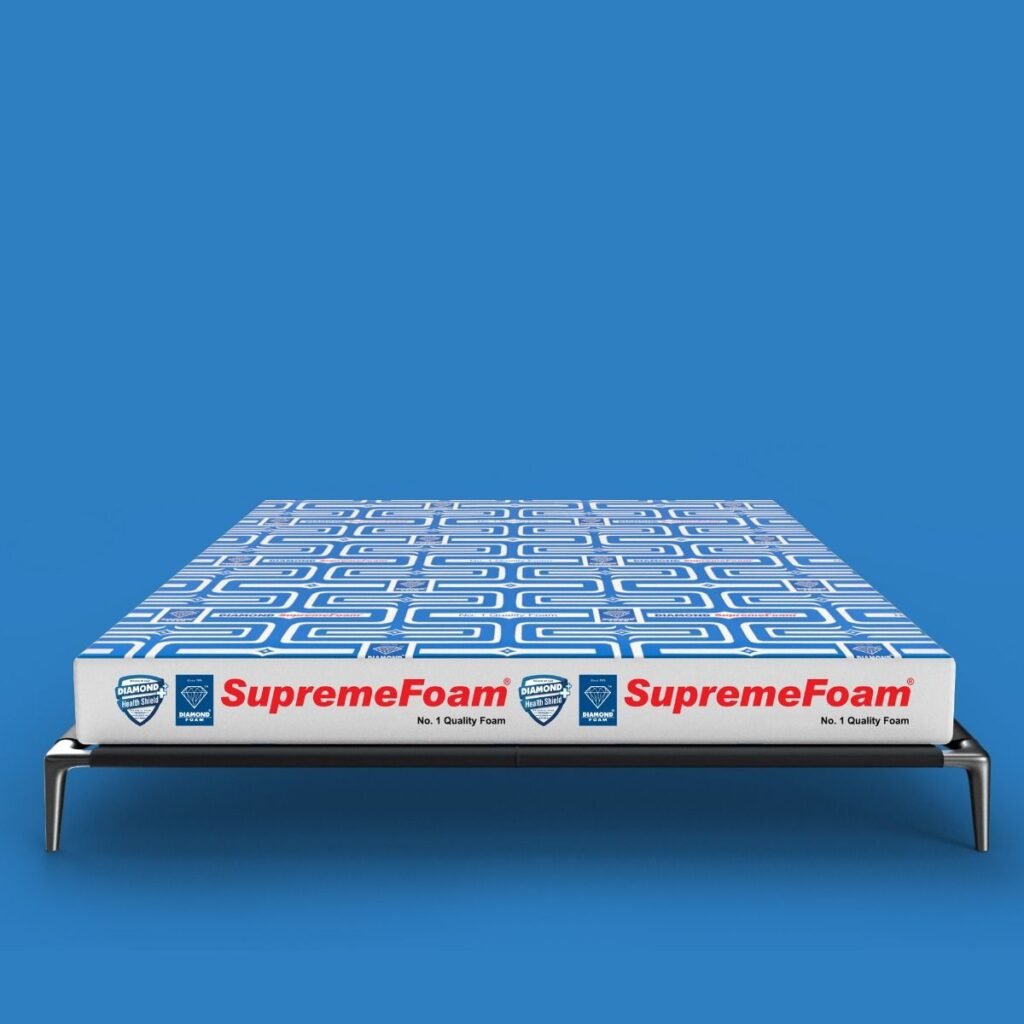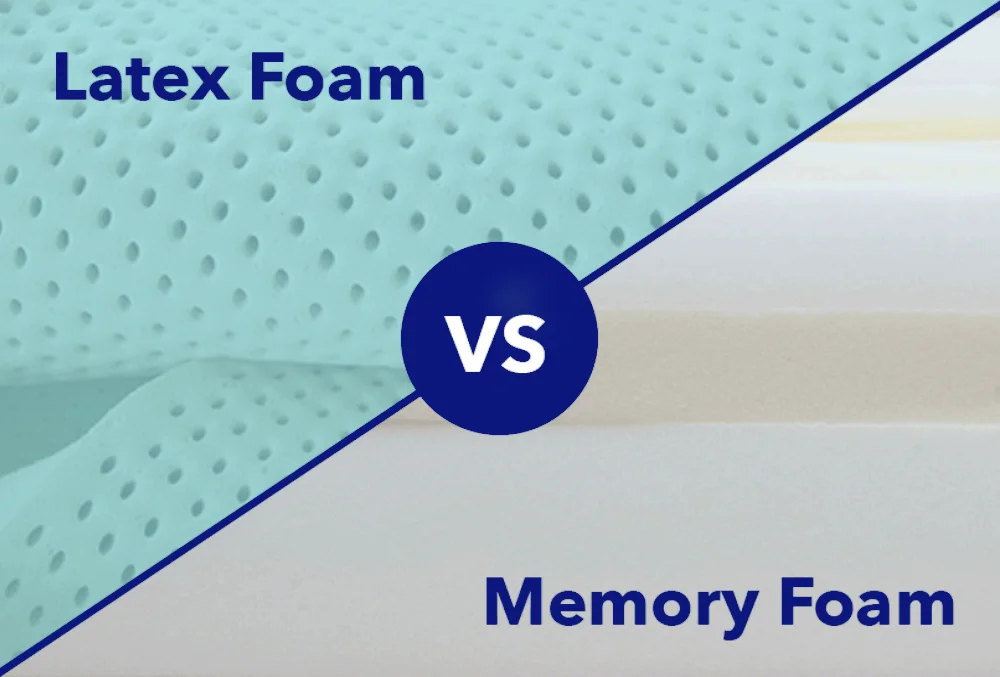When you lie down on a mattress, you’re engaging with the fascinating world of polymer science. The comfort, support, and durability of your bed are all determined by the chemistry of the foam inside. What looks like a simple cushion is actually a complex structure whose internal chemistry dictates how it feels, how long it lasts, and how well it supports your body.
Let’s dive into the science behind the most common foam types and what makes each one unique.
Polyurethane (PU) Foam: The Foundation of Comfort
Polyurethane foam, commonly known as polyfoam, is the most widely used foam in the mattress industry. It’s created by reacting a polyol with an isocyanate. This reaction forms a polymer network while releasing gas, which creates thousands of tiny air bubbles. This “open-cell” structure gives the foam its cushioning properties.
The quality of PU foam is primarily determined by its density (measured in kg/m³ or lbs/ft³):
- High-density polyfoam offers more support, resists sagging, and is highly durable.
- Low-density polyfoam feels softer but breaks down more quickly over time.
A high-density variant, often simply called high-density foam, is a more robust version of PU foam. Its dense structure makes it exceptionally supportive and long-lasting, which is why it’s a common choice for orthopedic mattresses. It helps with spinal alignment and provides firm, reliable support, making it ideal for those with back pain.
Memory Foam: The Viscoelastic “Hug”
Memory foam, or viscoelastic foam, is a modified polyurethane foam that contains special chemicals. These additives give it its unique ability to react to both heat and pressure.
When you lie down, your body heat softens the foam, allowing it to mold precisely to your shape. This “hugging” sensation distributes your body weight evenly, reducing pressure on joints. Once you get up, the foam slowly returns to its original form—hence the name “memory.” This behavior is due to the polymer chains temporarily rearranging under stress and then slowly springing back. This unique property is why memory foam is so prized for personalized comfort and pressure relief.
High-Resilience (HR) Foam: The Responsive Alternative
High-Resilience (HR) foam is another variation of polyurethane foam, made with a slightly different chemical composition. This gives it a more irregular, open-cell structure compared to standard PU foam.
As a result, HR foam feels much springier and more responsive. Unlike memory foam, which contours slowly, HR foam bounces back almost instantly. It supports the body without the deep “sinking” feeling, making it great for people who change positions frequently throughout the night. Thanks to its strong polymer structure, HR foam is also highly durable.
Latex Foam: The Natural, Bouncy Option
Latex foam is a natural material derived from the sap of rubber trees. It is known for its springy and supportive feel, offering a firm yet comfortable surface. Unlike memory foam, latex is naturally bouncy and doesn’t contour as deeply.
Latex is highly breathable, which helps to keep you cool. It is also naturally hypoallergenic and resistant to dust mites, making it an excellent choice for allergy sufferers. Latex foam is also exceptionally durable and long-lasting, providing consistent support for many years.
The Role of Additives
Foam chemistry is further enhanced by additives and fillers that fine-tune performance:
- Fire retardants are added for safety.
- Gel beads or graphite infusions improve temperature regulation by drawing heat away from the body.
- Fillers can be used to adjust the foam’s firmness, density, or cost.
Conclusion
Understanding the chemistry behind different foam types allows you to make a more informed decision when choosing a mattress. It’s not just about marketing labels; it’s about how carefully engineered polymers can deliver the perfect mix of comfort, support, and durability for a truly restful night’s sleep.



